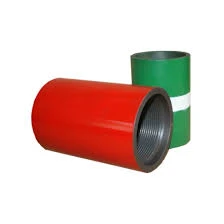- Afrikaans
- Albanian
- Amharic
- Arabic
- Armenian
- Azerbaijani
- Basque
- Belarusian
- Bengali
- Bosnian
- Bulgarian
- Catalan
- Cebuano
- Corsican
- Croatian
- Czech
- Danish
- Dutch
- English
- Esperanto
- Estonian
- Finnish
- French
- Frisian
- Galician
- Georgian
- German
- Greek
- Gujarati
- Haitian Creole
- hausa
- hawaiian
- Hebrew
- Hindi
- Miao
- Hungarian
- Icelandic
- igbo
- Indonesian
- irish
- Italian
- Japanese
- Javanese
- Kannada
- kazakh
- Khmer
- Rwandese
- Korean
- Kurdish
- Kyrgyz
- Lao
- Latin
- Latvian
- Lithuanian
- Luxembourgish
- Macedonian
- Malgashi
- Malay
- Malayalam
- Maltese
- Maori
- Marathi
- Mongolian
- Myanmar
- Nepali
- Norwegian
- Norwegian
- Occitan
- Pashto
- Persian
- Polish
- Portuguese
- Punjabi
- Romanian
- Russian
- Samoan
- Scottish Gaelic
- Serbian
- Sesotho
- Shona
- Sindhi
- Sinhala
- Slovak
- Slovenian
- Somali
- Spanish
- Sundanese
- Swahili
- Swedish
- Tagalog
- Tajik
- Tamil
- Tatar
- Telugu
- Thai
- Turkish
- Turkmen
- Ukrainian
- Urdu
- Uighur
- Uzbek
- Vietnamese
- Welsh
- Bantu
- Yiddish
- Yoruba
- Zulu
casing pup joint
Understanding Casing Pup Joints A Key Component in Oil and Gas Wells
In the oil and gas industry, the efficiency and safety of operations are paramount. One critical component that plays a vital role in maintaining well integrity and optimizing production is the casing pup joint. This article will explore the purpose, types, and applications of casing pup joints, emphasizing their importance in drilling operations.
What is a Casing Pup Joint?
A casing pup joint is a short length of pipe that is used in conjunction with casing to adjust the length of a casing string in a well. These joints are typically made from the same material as the casing and have similar dimensions. Casing pup joints can be essential for filling gaps when the standard lengths of casing cannot meet the required depth or when special configurations are needed.
Purpose and Applications
Casing pup joints serve several crucial functions in well construction and maintenance
1. Adjusting Casing Length Often, a full-length casing string is too long for the specific requirements of the wellbore. Casing pup joints provide a simple solution to make precise adjustments to the length, ensuring the casing meets the necessary specifications for pressure and depth.
2. Providing Flexibility In complex formations where the geology can change unpredictably, casing pup joints offer the necessary flexibility to adjust the casing string as drilling progresses. This adaptability can help prevent complications such as failures or unwanted pressure builds within the well.
3. Facilitating Connections Casing pup joints can also help facilitate connections between different sections of casing. They allow for easier installation of additional casing sections or the integration of other components, such as liners and screen joints, during completion operations.
4. Enhancing Well Integrity The integrity of a wellbore is essential for safe and efficient operations. Casing pup joints, when installed correctly, contribute to the overall strength and stability of the casing string, which is vital in preventing blowouts and protecting groundwater resources.
Types of Casing Pup Joints
casing pup joint

Casing pup joints come in various sizes and specifications depending on their application. The most common types include
- Standard Pup Joints These are the most commonly used pup joints, manufactured in standard lengths to suit a range of well conditions.
- Specialty Pup Joints Depending on the specific needs of the well, specialty pup joints can be custom-designed for unique applications, such as high-pressure environments or corrosive conditions.
- Threaded and Coupled Pup Joints These joints are designed with specific thread configurations to allow for secure connections with other pipe sections and fittings, ensuring that the integrity of the system is maintained.
Considerations in Selecting Casing Pup Joints
When selecting casing pup joints, several factors must be considered to ensure optimal performance
1. Material Composition The material of the pup joints should match that of the casing to maintain uniform strength and corrosion resistance. Common materials include carbon steel, stainless steel, and specialty alloys.
2. Pressure Rating It's crucial to select a pup joint that can withstand the expected pressure conditions within the well. Operating conditions should always be evaluated to ensure safety and efficiency.
3. Compatibility with Other Equipment Casing pup joints should be compatible with the existing equipment and casing strings to avoid installation challenges and ensure a seamless operation.
Conclusion
Casing pup joints are essential components in the construction and maintenance of oil and gas wells. Their ability to provide flexibility, improve well integrity, and facilitate smooth connections makes them invaluable in drilling operations. Understanding the various types, purposes, and selection criteria for casing pup joints can help industry professionals optimize well performance, enhance safety, and ultimately contribute to successful drilling projects. As the industry continues to evolve, so too will the technology and standards surrounding these vital components, ensuring they meet the ever-growing demands of oil and gas exploration and production.
-
Well Casing Extension Couplings – Applications and InstallationNewsJun.06,2025
-
Types of Crossover Subs in Drilling & CompletionNewsJun.06,2025
-
Key Features of High-Quality Tubing Pup JointsNewsJun.06,2025
-
Installation and Maintenance Tips for Steel Couplings for PipeNewsJun.06,2025
-
How to Select the Right Pup Joint for Oil & Gas OperationsNewsJun.06,2025
-
Applications of Stainless Steel Pipe CouplingsNewsJun.06,2025







